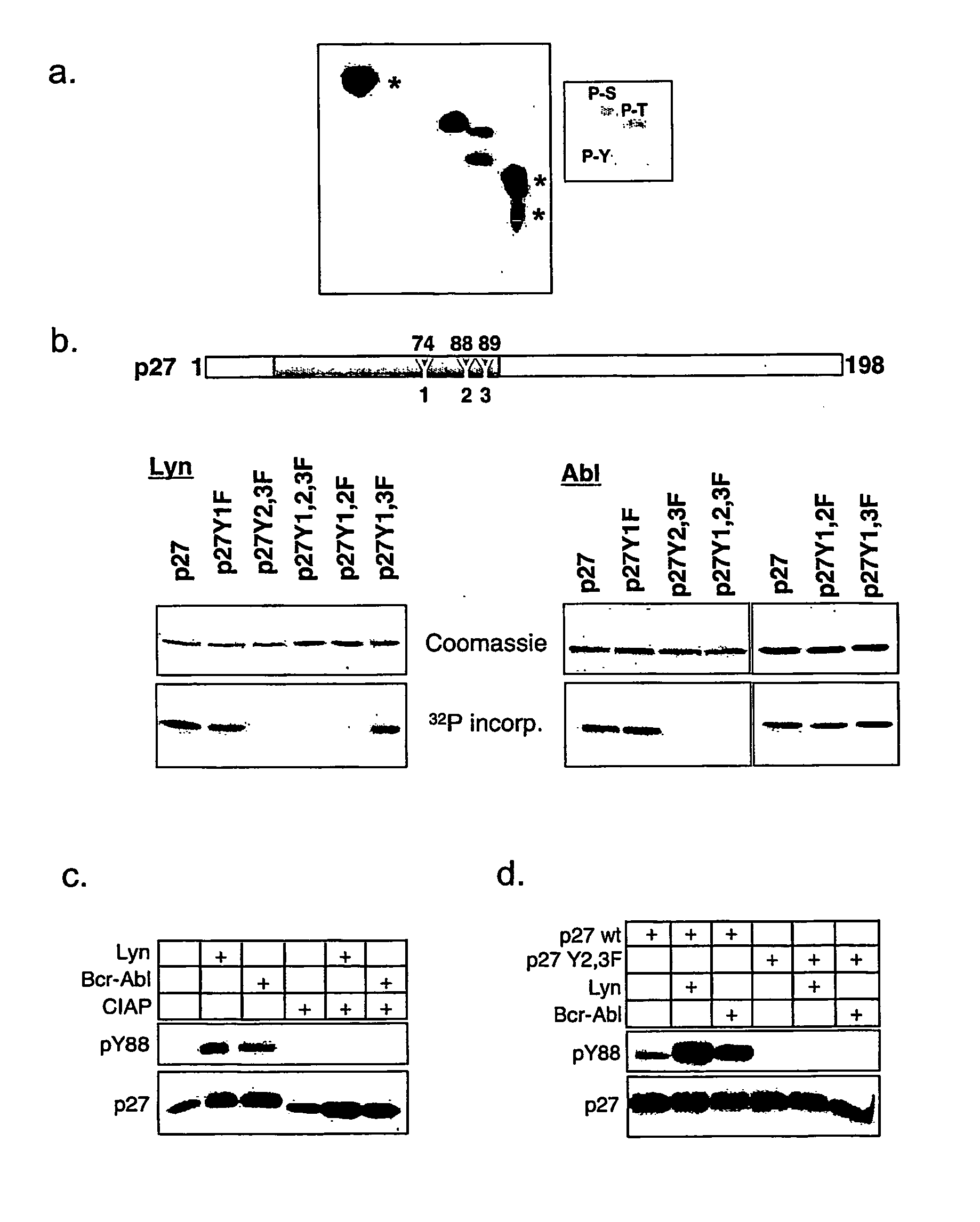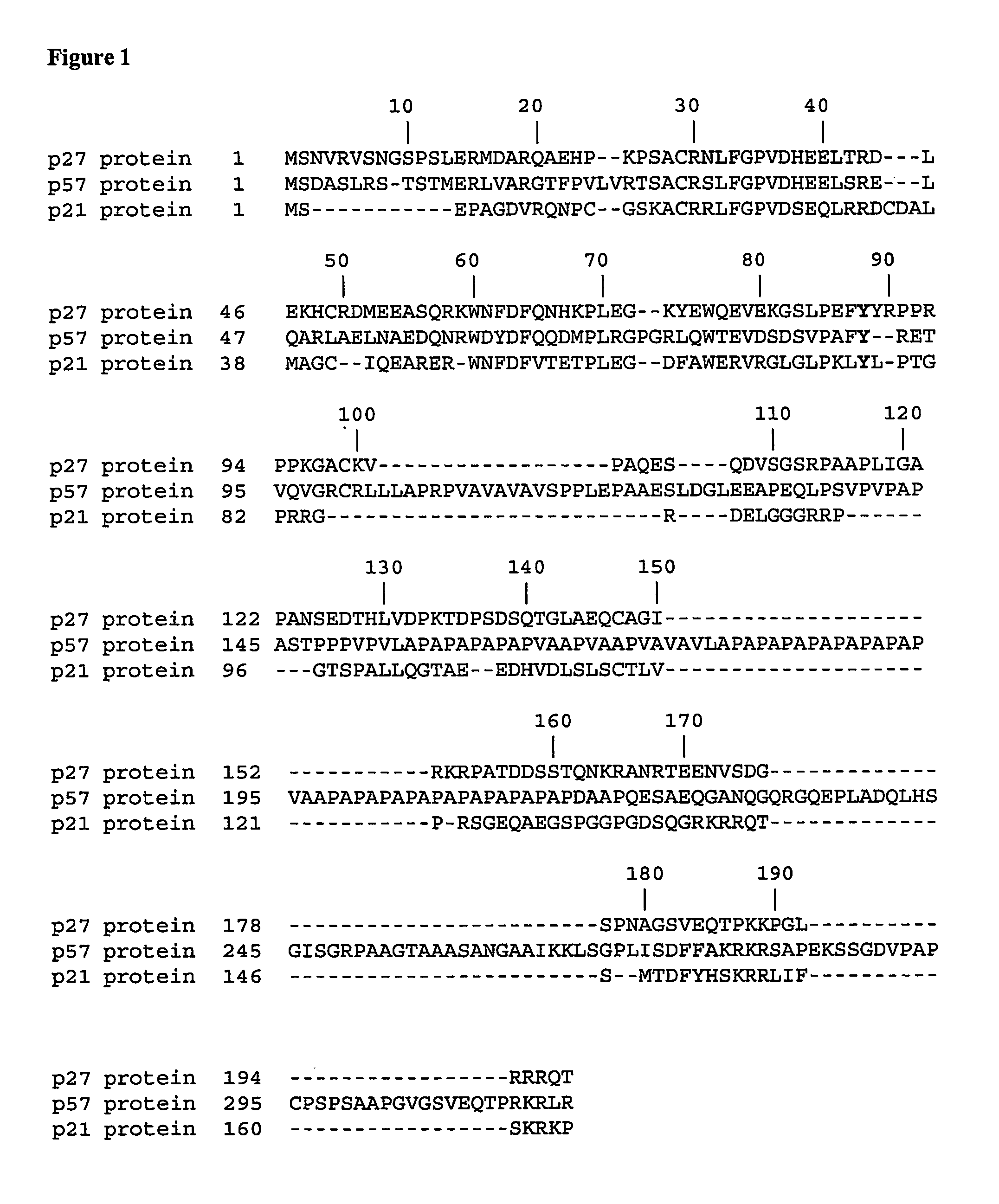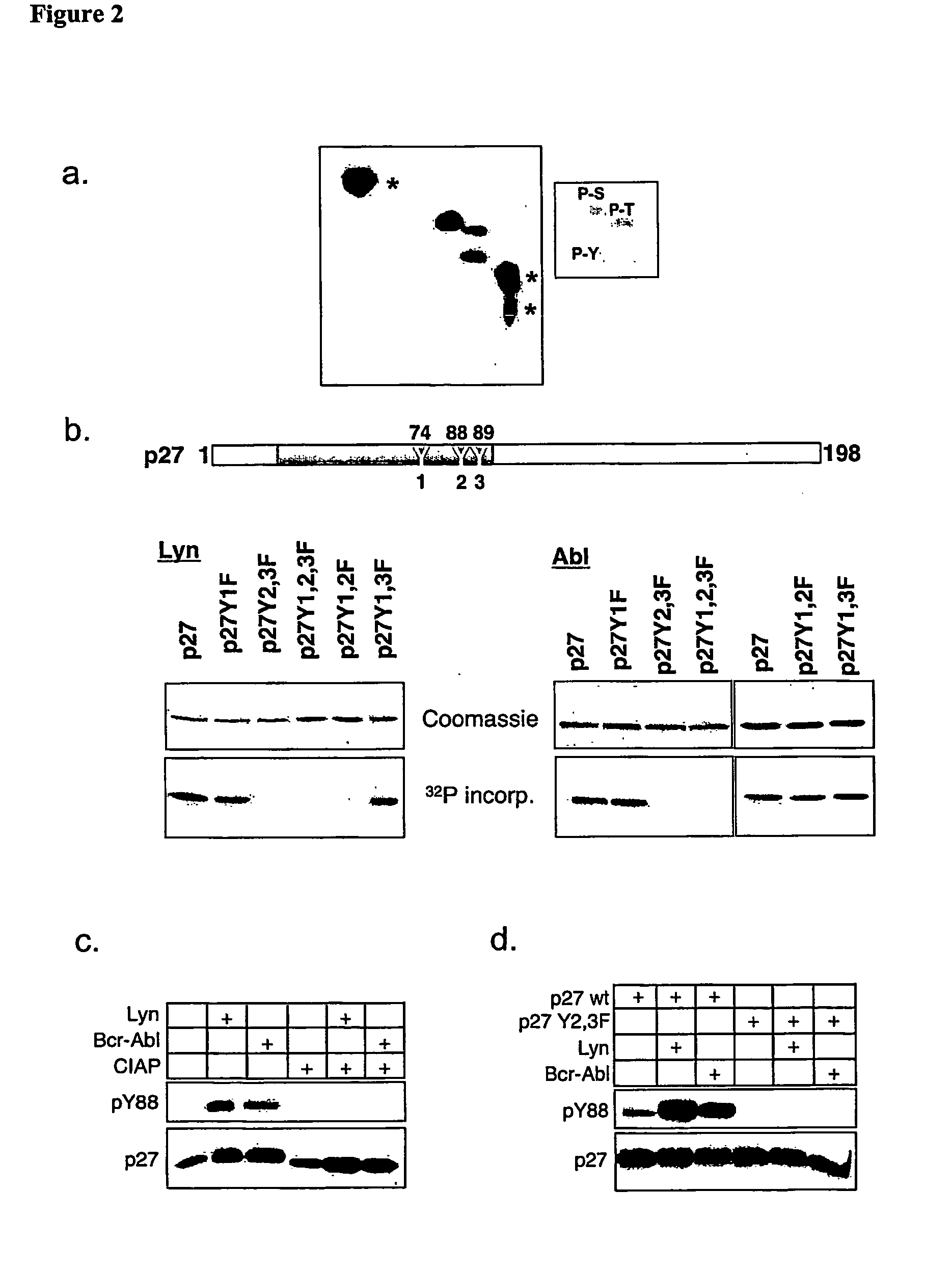Tyrosine Phosphorylation of Cdk Inhibitor Proteins of the Cip/Kip Family
a technology of cip/kip and inhibitor proteins, which is applied in the field of cip/kip inhibitor proteins phosphorylation, can solve the problems of high patient mortality and aggressive disease course, and achieve the effects of promoting cdk/cyclin d assembly, promoting activation of kinase, and reducing the ability of p27 or p21 to inhibit cdks
- Summary
- Abstract
- Description
- Claims
- Application Information
AI Technical Summary
Benefits of technology
Problems solved by technology
Method used
Image
Examples
example
[0292]The CDK inhibitor p27Kip1 controls cell proliferation by binding to and regulating the activity of cyclin-dependent kinases (Sherr, C., and Roberts, J. M., Genes Dev. 13 (1999) 1501-1512; Hengst, L., and Reed, S. I., Curr. Top. Microbiol. Immunol. 227 (1998) 25-41). The following example shows that the conserved tyrosine residue 88 in the CDK binding domain of p27 is phosphorylated by the Lyn and Bcr-Abl kinases. This phosphorylation does not prevent p27 binding to the CDK / cyclin complex but impairs its CDK inhibition. Importantly, the tyrosine phosphorylated inhibitor becomes efficiently phosphorylated in CDK2 kinase complexes on threonine-187, a site required for the SCF-Skp2 dependent degradation of p27 at the G1 / S transition3. A mutant of p27 where tyrosine 88 is exchanged to phenylalanine (Y88F) is stabilized. Whereas moderate overexpression of p27 failed to arrest the cell cycle of K562 CML cells, overexpression of the Y88F mutant leads to increased cell cycle arrest in ...
PUM
| Property | Measurement | Unit |
|---|---|---|
| Fraction | aaaaa | aaaaa |
| Length | aaaaa | aaaaa |
| Inhibition | aaaaa | aaaaa |
Abstract
Description
Claims
Application Information
 Login to View More
Login to View More - R&D
- Intellectual Property
- Life Sciences
- Materials
- Tech Scout
- Unparalleled Data Quality
- Higher Quality Content
- 60% Fewer Hallucinations
Browse by: Latest US Patents, China's latest patents, Technical Efficacy Thesaurus, Application Domain, Technology Topic, Popular Technical Reports.
© 2025 PatSnap. All rights reserved.Legal|Privacy policy|Modern Slavery Act Transparency Statement|Sitemap|About US| Contact US: help@patsnap.com



